siRNA-induced liver ApoB knockdown lowers serum LDL-cholesterol in a mouse model with human-like serum lipids
- PMID: 21398511
- PMCID: PMC3090230
- DOI: 10.1194/jlr.M012872
siRNA-induced liver ApoB knockdown lowers serum LDL-cholesterol in a mouse model with human-like serum lipids
Abstract
Increased serum apolipoprotein (apo)B and associated LDL levels are well-correlated with an increased risk of coronary disease. ApoE⁻/⁻ and low density lipoprotein receptor (LDLr)⁻/⁻ mice have been extensively used for studies of coronary atherosclerosis. These animals show atherosclerotic lesions similar to those in humans, but their serum lipids are low in apoB-containing LDL particles. We describe the development of a new mouse model with a human-like lipid profile. Ldlr CETP⁺/⁻ hemizygous mice carry a single copy of the human CETP transgene and a single copy of a LDL receptor mutation. To evaluate the apoB pathways in this mouse model, we used novel short-interfering RNAs (siRNA) formulated in lipid nanoparticles (LNP). ApoB siRNAs induced up to 95% reduction of liver ApoB mRNA and serum apoB protein, and a significant lowering of serum LDL in Ldlr CETP⁺/⁻ mice. ApoB targeting is specific and dose-dependent, and it shows lipid-lowering effects for over three weeks. Although specific triglycerides (TG) were affected by ApoB mRNA knockdown (KD) and the total plasma lipid levels were decreased by 70%, the overall lipid distribution did not change. Results presented here demonstrate a new mouse model for investigating additional targets within the ApoB pathways using the siRNA modality.
Figures
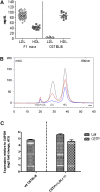
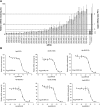

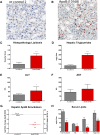


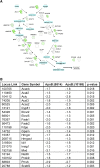
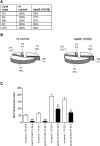
Similar articles
-
Phenotype interaction of apobec-1 and CETP, LDLR, and apoE gene expression in mice: role of apoB mRNA editing in lipoprotein phenotype expression.Arterioscler Thromb Vasc Biol. 1998 May;18(5):747-55. doi: 10.1161/01.atv.18.5.747. Arterioscler Thromb Vasc Biol. 1998. PMID: 9598833
-
Imbalance of APOB Lipoproteins and Large HDL in Type 1 Diabetes Drives Atherosclerosis.Circ Res. 2024 Jul 5;135(2):335-349. doi: 10.1161/CIRCRESAHA.123.323100. Epub 2024 Jun 3. Circ Res. 2024. PMID: 38828596 Free PMC article.
-
Liver LDL receptor mRNA expression is decreased in human ApoB/CETP double transgenic mice and is regulated by diet as well as the cytokine oncostatin M.Arterioscler Thromb Vasc Biol. 1997 Nov;17(11):2948-54. doi: 10.1161/01.atv.17.11.2948. Arterioscler Thromb Vasc Biol. 1997. PMID: 9409281
-
Lipoprotein size and atherosclerosis susceptibility in Apoe(-/-) and Ldlr(-/-) mice.Arterioscler Thromb Vasc Biol. 2001 Oct;21(10):1567-70. doi: 10.1161/hq1001.097780. Arterioscler Thromb Vasc Biol. 2001. PMID: 11597927 Review.
-
Lipoprotein size and susceptibility to atherosclerosis--insights from genetically modified mouse models.Curr Drug Targets. 2008 Mar;9(3):174-89. doi: 10.2174/138945008783755629. Curr Drug Targets. 2008. PMID: 18336235 Free PMC article. Review.
Cited by
-
Evolving targets for lipid-modifying therapy.EMBO Mol Med. 2014 Oct;6(10):1215-30. doi: 10.15252/emmm.201404000. EMBO Mol Med. 2014. PMID: 25172365 Free PMC article. Review.
-
In Utero Dexamethasone Exposure Exacerbates Hepatic Steatosis in Rats That Consume Fructose During Adulthood.Nutrients. 2019 Sep 5;11(9):2114. doi: 10.3390/nu11092114. Nutrients. 2019. PMID: 31491968 Free PMC article.
-
siRNA-mediated knockdown of P450 oxidoreductase in rats: a tool to reduce metabolism by CYPs and increase exposure of high clearance compounds.Pharm Res. 2014 Dec;31(12):3445-60. doi: 10.1007/s11095-014-1433-0. Epub 2014 Jul 1. Pharm Res. 2014. PMID: 24980206
-
Human MicroRNA-548p Decreases Hepatic Apolipoprotein B Secretion and Lipid Synthesis.Arterioscler Thromb Vasc Biol. 2017 May;37(5):786-793. doi: 10.1161/ATVBAHA.117.309247. Epub 2017 Mar 23. Arterioscler Thromb Vasc Biol. 2017. PMID: 28336556 Free PMC article.
-
siRNA nanoparticles targeting CaMKIIγ in lesional macrophages improve atherosclerotic plaque stability in mice.Sci Transl Med. 2020 Jul 22;12(553):eaay1063. doi: 10.1126/scitranslmed.aay1063. Sci Transl Med. 2020. PMID: 32718990 Free PMC article.
References
-
- Wouters K., Shiri-Sverdlov R., van Gorp P. J., van Bilsen M., Hofker M. H. 2005. Understanding hyperlipidemia and atherosclerosis: lessons from genetically modified apoe and ldlr mice. Clin. Chem. Lab. Med. 43: 470–479. - PubMed
-
- Maron D. J., Fazio S., Linton M. F. 2000. Current perspectives on statins. Circulation. 101: 207–213. - PubMed
-
- Hobbs H. H., Brown M. S., Goldstein J. L. 1992. Molecular genetics of the LDL receptor gene in familial hypercholesterolemia. Hum. Mutat. 1: 445–466. - PubMed
-
- Havekes L., de Wit E., Leuven J. G., Klasen E., Utermann G., Weber W., Beisiegel U. 1986. Apolipoprotein E3-Leiden. A new variant of human apolipoprotein E associated with familial type III hyperlipoproteinemia. Hum. Genet. 73: 157–163. - PubMed
MeSH terms
Substances
LinkOut - more resources
Full Text Sources
Other Literature Sources
Medical
Molecular Biology Databases
Miscellaneous

